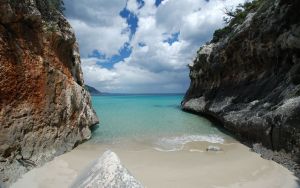Sardinia candidate site
A team of scientist from Italy and other European countries is carrying out measurements of environmental fields (seismic, acoustic, magnetic) to assess the site's quality as a potential host of the future Einstein Telescope underground infrastructure. These measurements are accompanied by in-depth geotechnical, hydrogeological, ... studies, which are required to understand the feasibility, cost, and impact of Einstein Telescope at this site. The GSSI group participates in the acoustic and seismic characterization. GSSI is also involved in a socio-economic impact study of the Einstein Telescope at Sardinia through the Social Sciences department.
Seismic measurements
Our group contributes a seismometer array to the Sardinia studies, which will allow us to characterize the seismic sources and seismic wavefield in detail especially for an accurate prediction of Newtonian noise from seismic fields.
The Einstein Telescope group at University of Pisa has set up a server for data storage and Jupyter notebooks, which is being used to process seismic data acquired at the candidate site at the surface and underground [Razzano et al (2019)].
Infrasound measurements
While atmospheric density fluctuations are predicted to couple weakly with an underground GW detector, this coupling strongly depends on the depth of the detector, and as long as the final choice of the detector depth is not made, gravitational noise from acoustic atmospheric fields must be considered as a potential sensitivity limitation. Important for this purpose is the study of two-point correlations of the acoustic field, which, together with the detector depth, determine how strongly acoustic fields couple gravitationally with the interferometer's test masses.
The deployment of a microphone array is currently being planned. Since this experiment requires an outdoor deployment of microphones, it is important to provide a shield against weather, which includes the detrimental influence of wind on acoustic correlation measurements. Without wind shield, the local turbulence formed around each microphone leads to local pressure fluctuations, which are uncorrelated between sensors, and which can easily override the contribution of the acoustic field.
